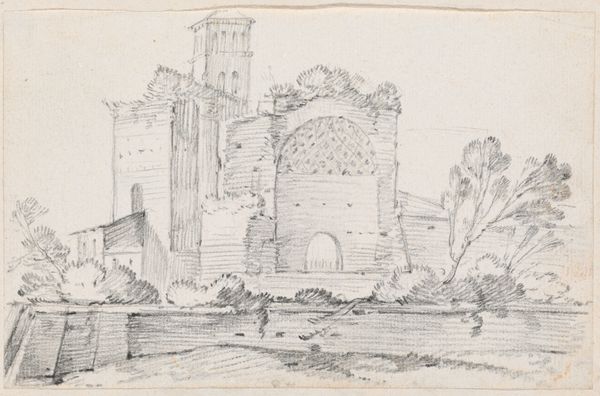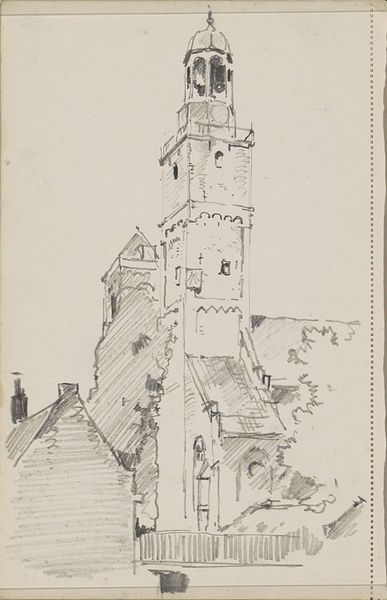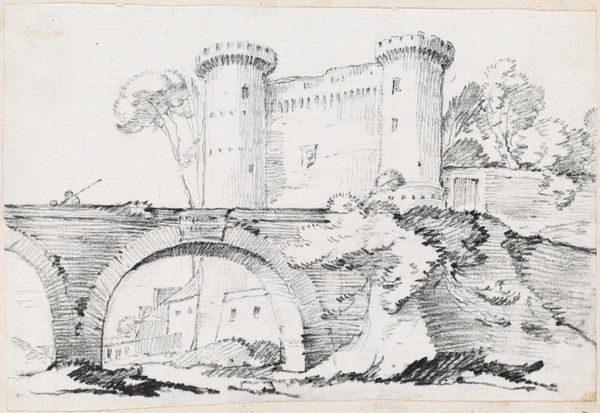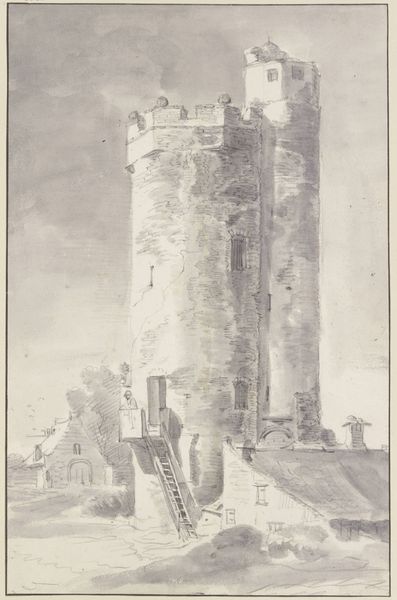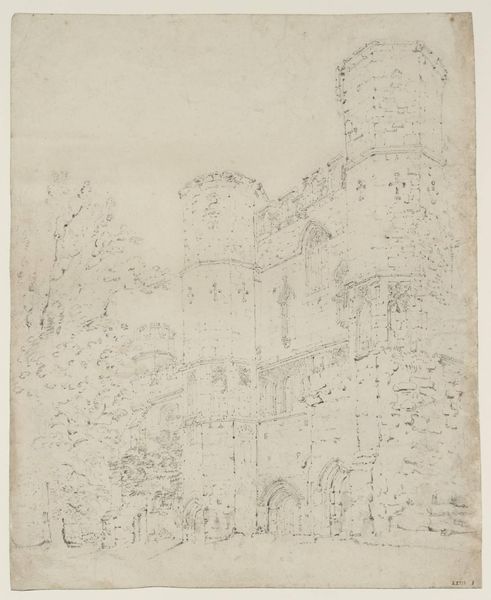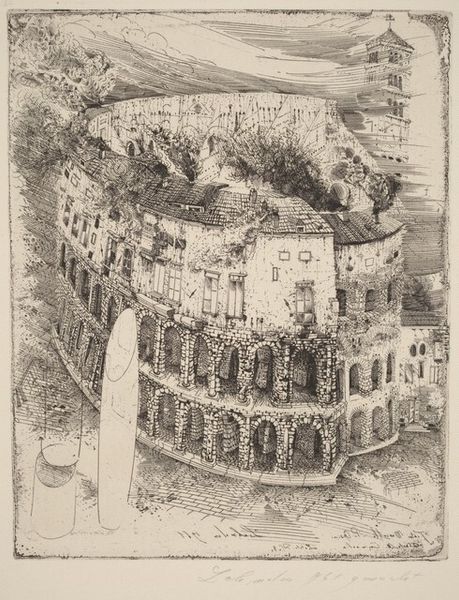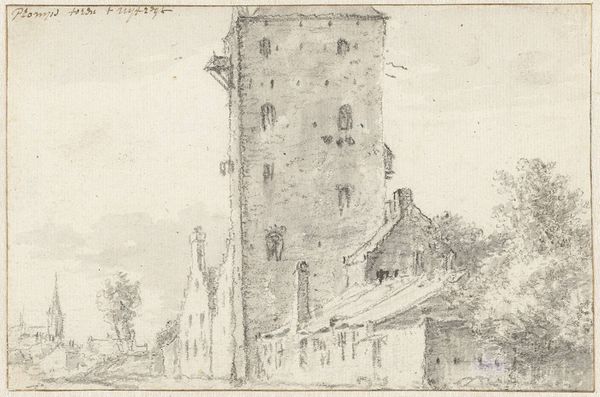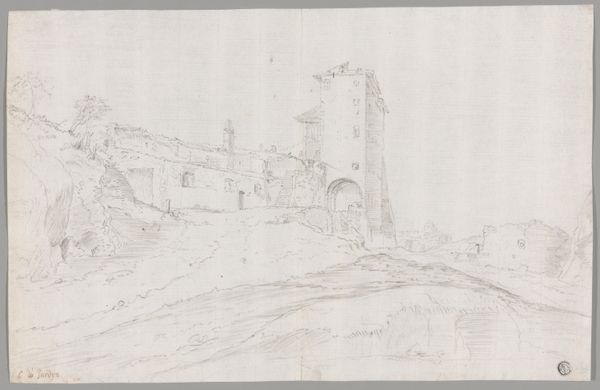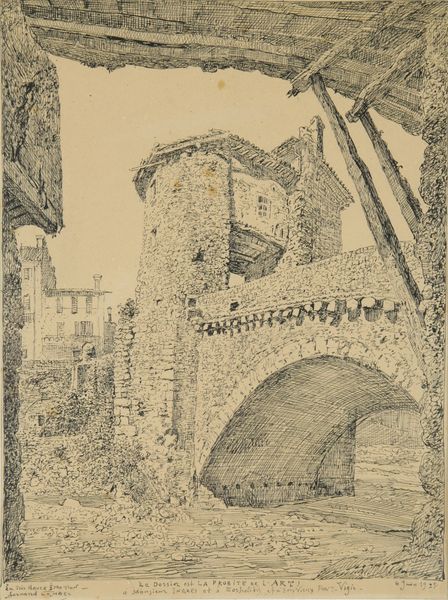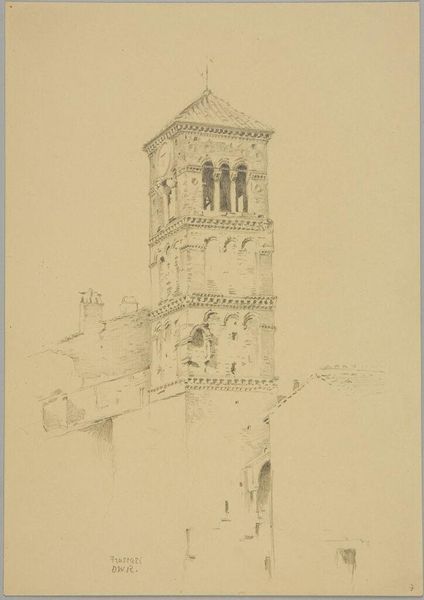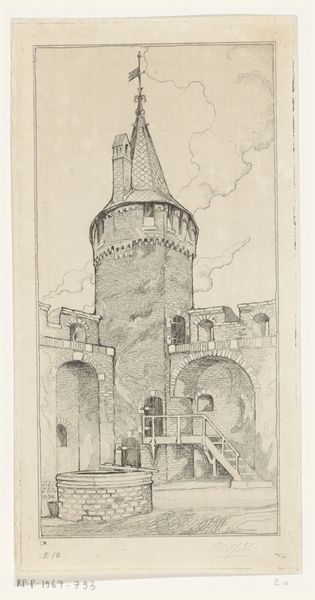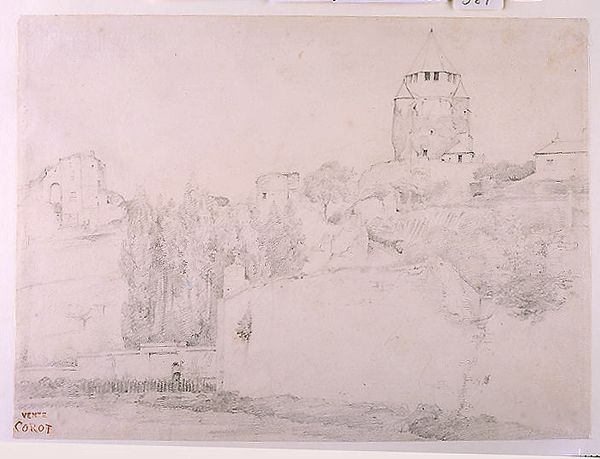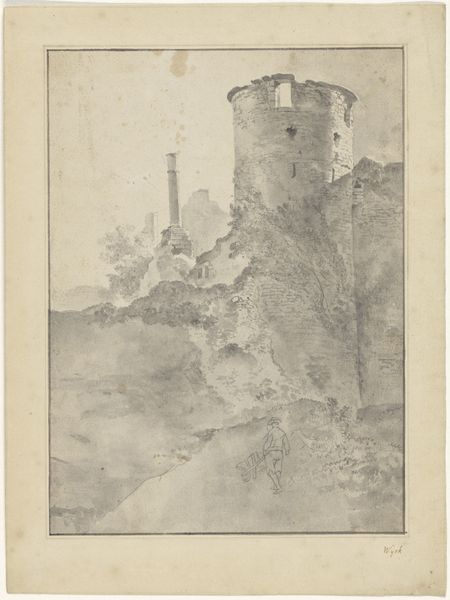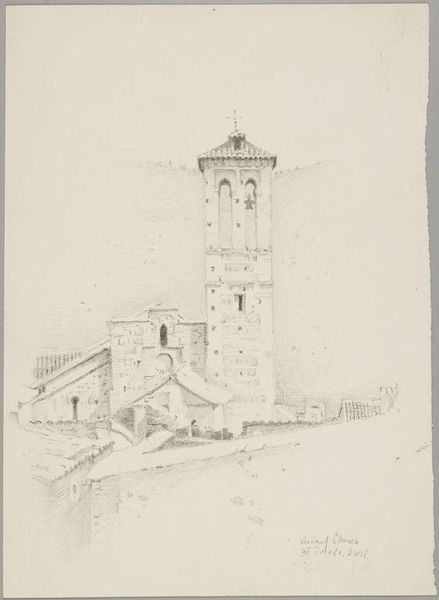
drawing, paper, ink, architecture
#
drawing
#
dutch-golden-age
#
landscape
#
paper
#
ink
#
architecture drawing
#
architecture
Dimensions: height 147 mm, width 94 mm
Copyright: Rijks Museum: Open Domain
Curator: What a stark, almost haunting image. Editor: Indeed. What immediately strikes me is the composition – the tower dominates the frame, but it's cropped, making it feel both monumental and vulnerable. I believe this is “Ruïne van een toren” – “Ruin of a Tower” – a drawing in ink on paper by Moses ter Borch, dating from around 1660 to 1661. It's currently held here at the Rijksmuseum. Curator: The crumbling architecture speaks to the inevitable decline of power structures. I see the ruin not just as a physical space, but also as a symbol of societal decay or perhaps a commentary on the transience of human endeavors. Was this created during a period of intense political upheaval in the Netherlands? Editor: The Golden Age was indeed a time of transformation, yet not overtly unstable in the ways that some other nations experienced. I'm interested in how Ter Borch renders the surface texture of the stone – those subtle variations in tone create a tangible sense of age and erosion. It emphasizes materiality. Do you find it to be overtly political? Curator: Maybe not overtly political, but I read a certain commentary nonetheless. One might consider what "progress" really entails. This work may underscore the value of community strength. Editor: Perhaps. Looking at the architecture itself, the way he uses light and shadow defines the structure’s form, the elegant arched windows, even in disrepair. It's a compelling exercise in line and form. The details aren't razor sharp, softening the decay. Curator: True, that slightly blurred quality gives it a dreamlike feel. The Dutch Golden Age, in some ways, whitewashed its prosperity built on colonial exploitation. Ter Borch presenting a decaying structure can subtly allude to moral failures hidden beneath the veneer of wealth. It prompts us to look beyond the surface. Editor: That's an interesting reading, juxtaposing its historical context with its visual qualities. Regardless of its implicit commentary, the drawing is undeniable proof of Ter Borch’s masterful control of his medium. Curator: Ultimately, “Ruin of a Tower” provides a lens to examine Dutch identity, prompting consideration about how collective memory is built and maintained. Editor: And perhaps more universally, a timeless consideration on change and impermanence expressed through expert manipulation of artistic elements.
Comments
No comments
Be the first to comment and join the conversation on the ultimate creative platform.
